Multi-stack monitoring & Automatic stack issue alerts
前言
這篇是 Elastic Cloud 比免費版還多的功能 系列的最後一篇,主要是針對 Stack Monitoring 中 Gold License 才能使用、但已經在 Elastic Cloud Standard 版本中開放使用的兩個功能 Multi-stack monitoring 和 Automatic stack issue alerts 。
進入此章節的先備知識
Elasticsearch 的基本認識
Kibana 的基本操作
此章節的重點學習
Multi-stack monitoring 的功能介紹。
Automatic stack issue alerts 的功能介紹。
Multi-stack monitoring
這個功能主要的目的是讓你透過一個 集中化的監控叢集 (centrlized monitoring cluster) ,來記錄、追縱、比對來自多個 Elastic Stack deployment 的健康或是效能的狀態,白話就是:把多個 cluster + elastic stack 產品的 log 送到專們 monitoring 用的 cluster 來監管。
這樣 Centralized monitoring cluster 也是 Elastic 官方建議的做法,做好角色分工,也避免讓處理其他工作的 Elasticsearch Cluster 若發生異常時,不會影響到 Monitoring 的監控狀態。
以下是在 Elastic Cloud 的 Elasticsearch 設定時,會看到 Monitoring deployment 的設定選項,其中也明確的建議 Production 環境要記得將 Montoring 的任務安排給一組特定的 Deployment 來管理。
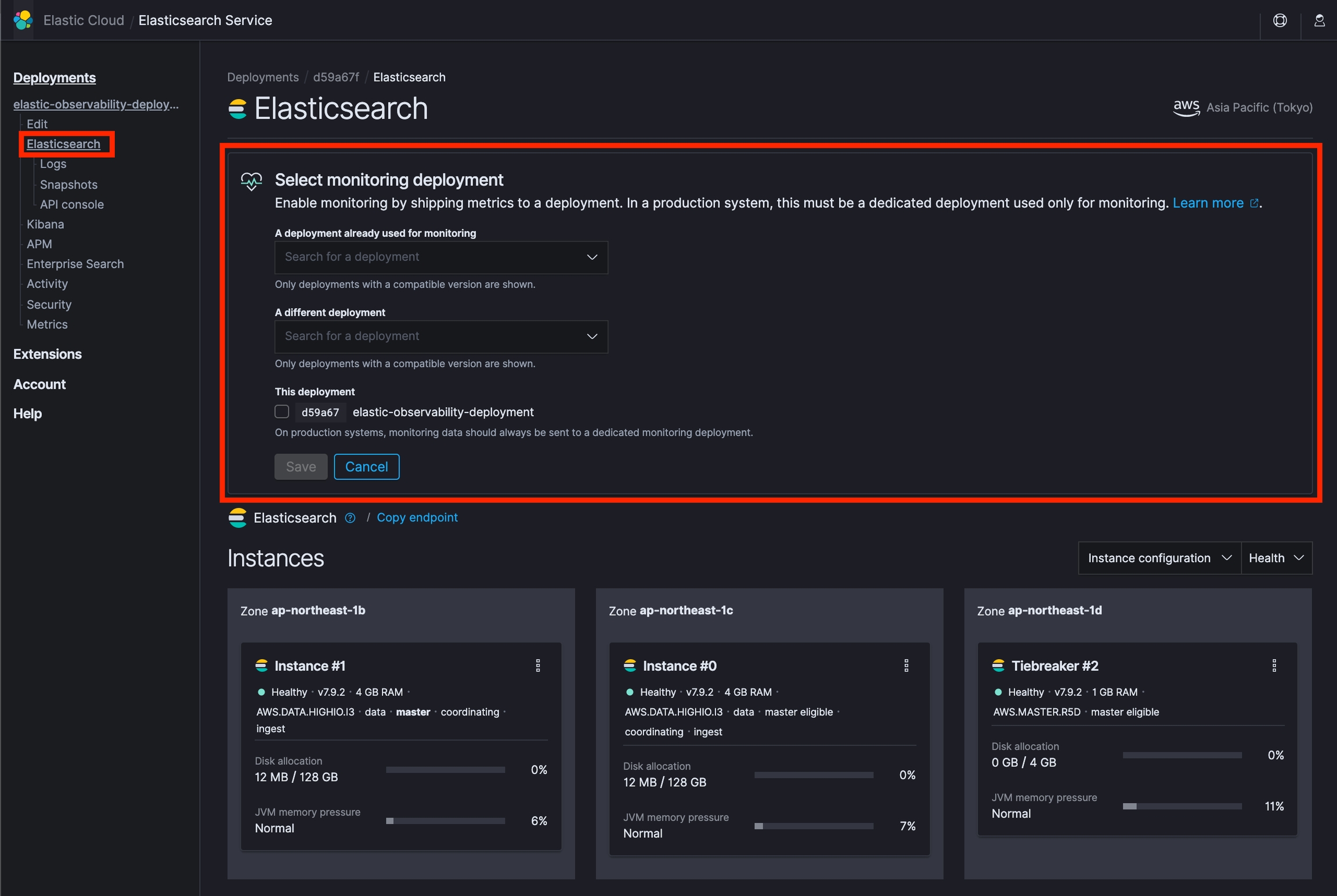
若是 Monitoring Culster 同時管理多個 Elasticsearch Culster 時,進入 Kibana > Stack Monitoring 會出現 Clusters 的選單,此時也有所有 Clusters 的 Overview。
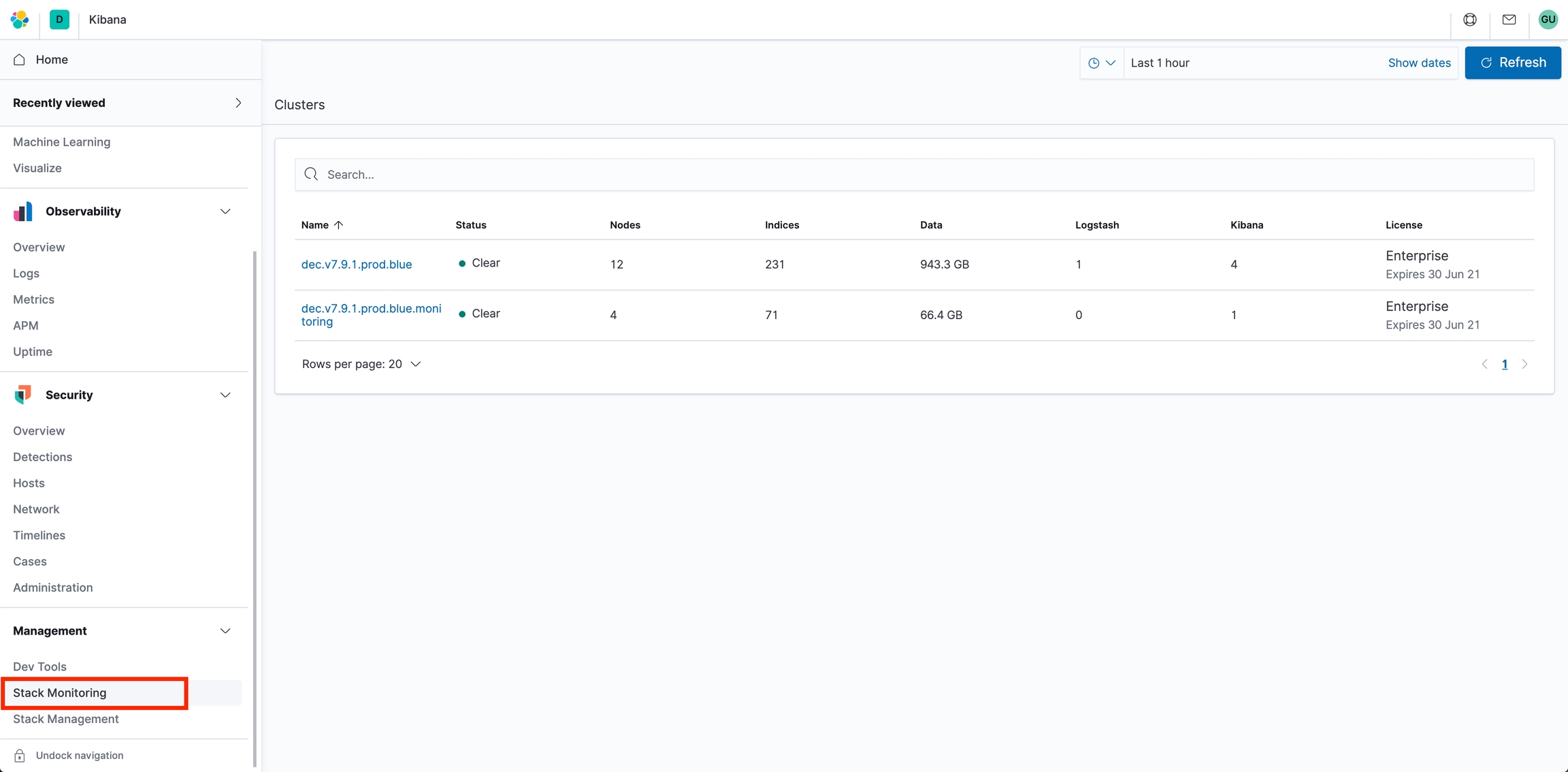
進入某個 Cluster 後,可以查看這組 Deployement 的 Elastic Stack monitor。
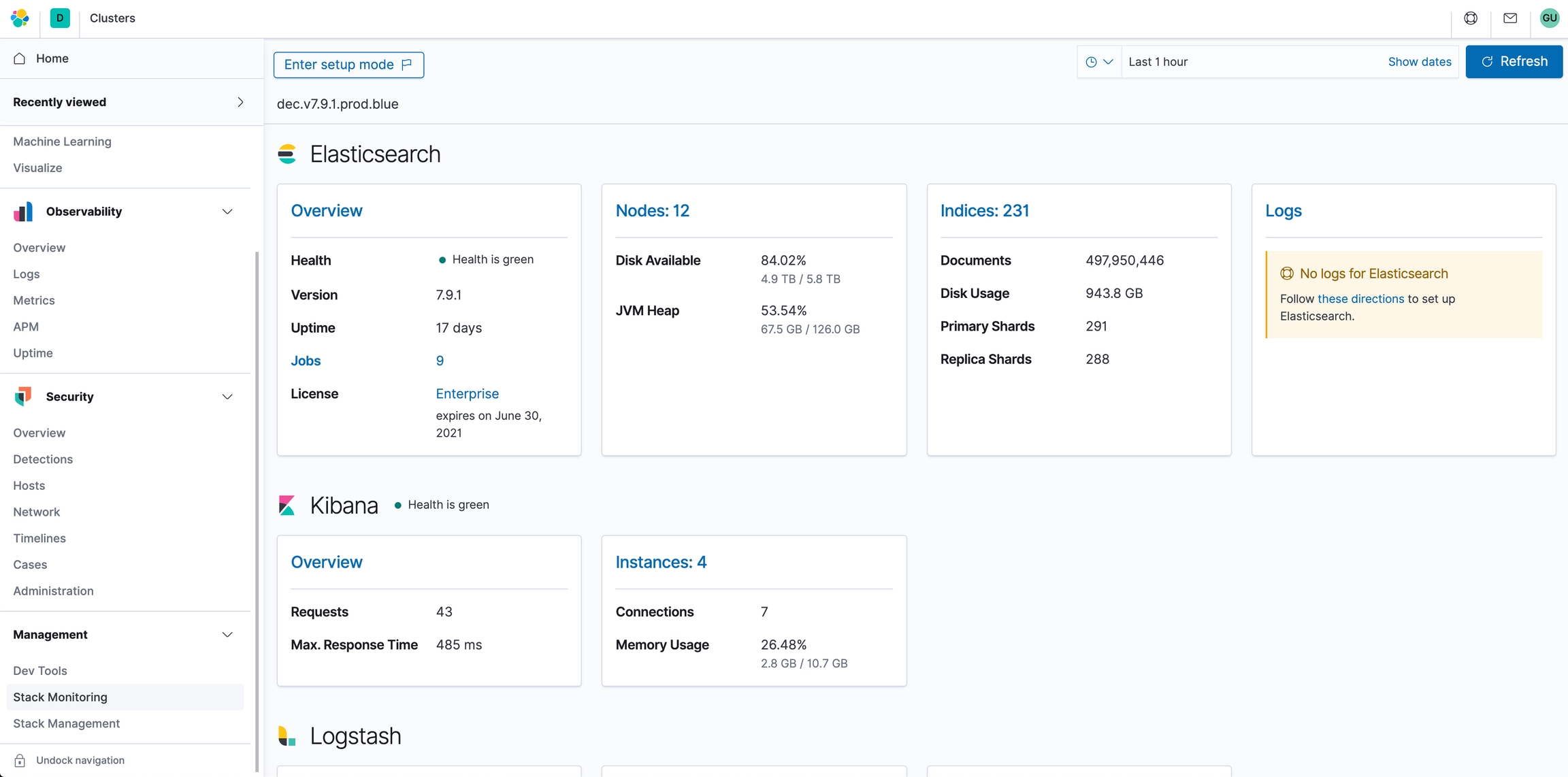
Elastic Stack 中,Metricbeat 是被 Elastic 官方推薦用來收集 Monitoring data 的工具,詳細如何使用,請參考 官方文件 - Collecting monitoring data with metricbeat 。
Automatic stack issue alerts
Elastic Stack 中除了先前介紹的 Watcher 之外,Elastic Stack 7.7 時推出全新的 Alerting Framework,將 6.x 版時陸續為了先舖路而推出的各個功能整合起來,完成 Alerting 的大業。詳細的介紹可以從 官方 Blog - Introducing the new alerting framework for Elastic Observability, Elastic Security, and the Elastic Stack 來查閱。
Watcher 主要是以 Elasticsearch 來當成執行的 Instance,而 Alerting 是以 Kibana 來當執行的 Instance,兩者層級不太一樣,詳細差別官方文件有特別一個章節在描述他們的差異,可以參考 這邊。
在 Elastic Stack 中,這個 Automatic stack issue alerts 有預先針對 Elastic Stack 定義好一些通知的 alerts 機制,我們進入 setup mode 去修改相關的設定。
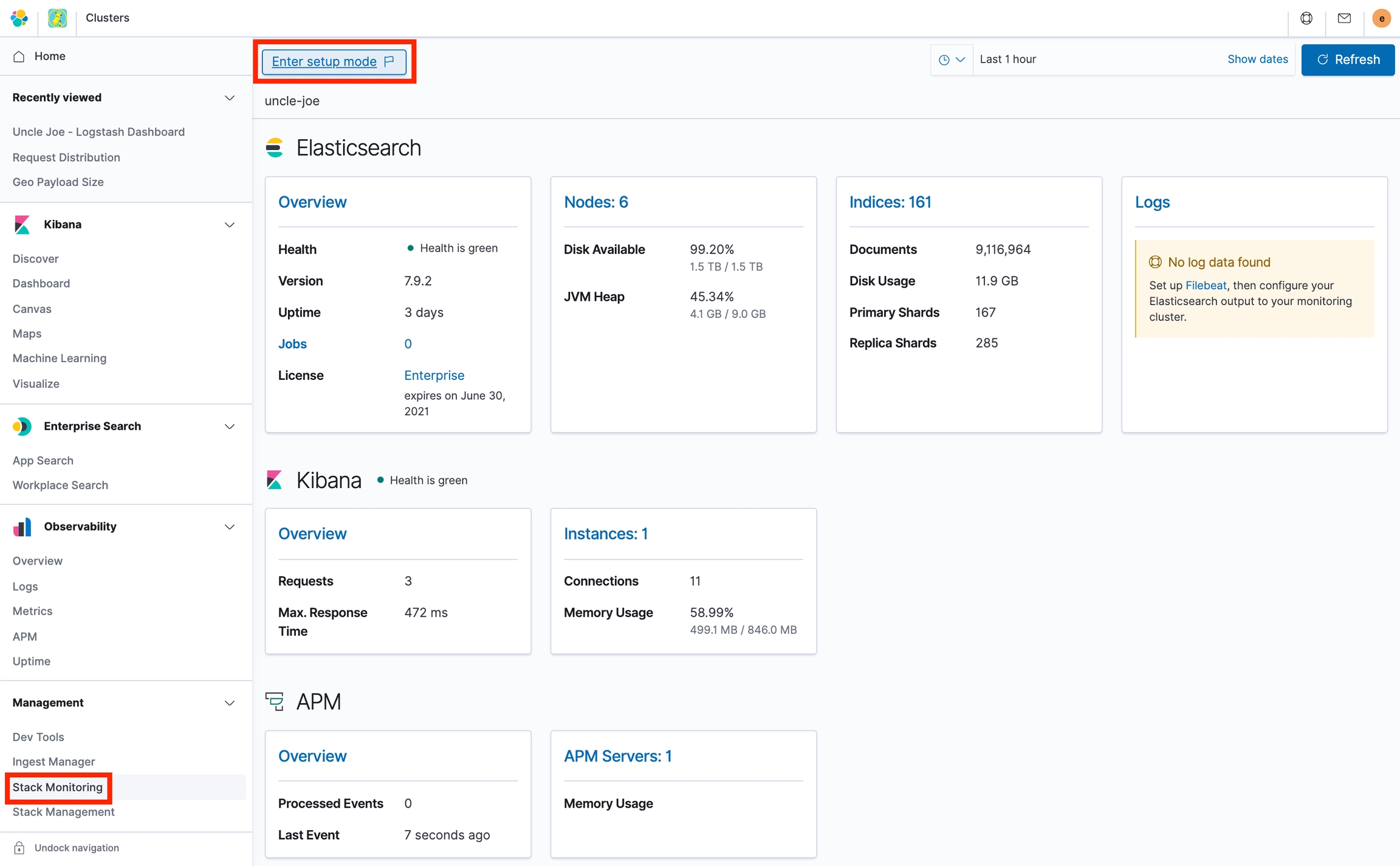
在不同的 Elastic Stack 中,點選 alerts 之後,可看到會有不同的 Alerts 的定義。
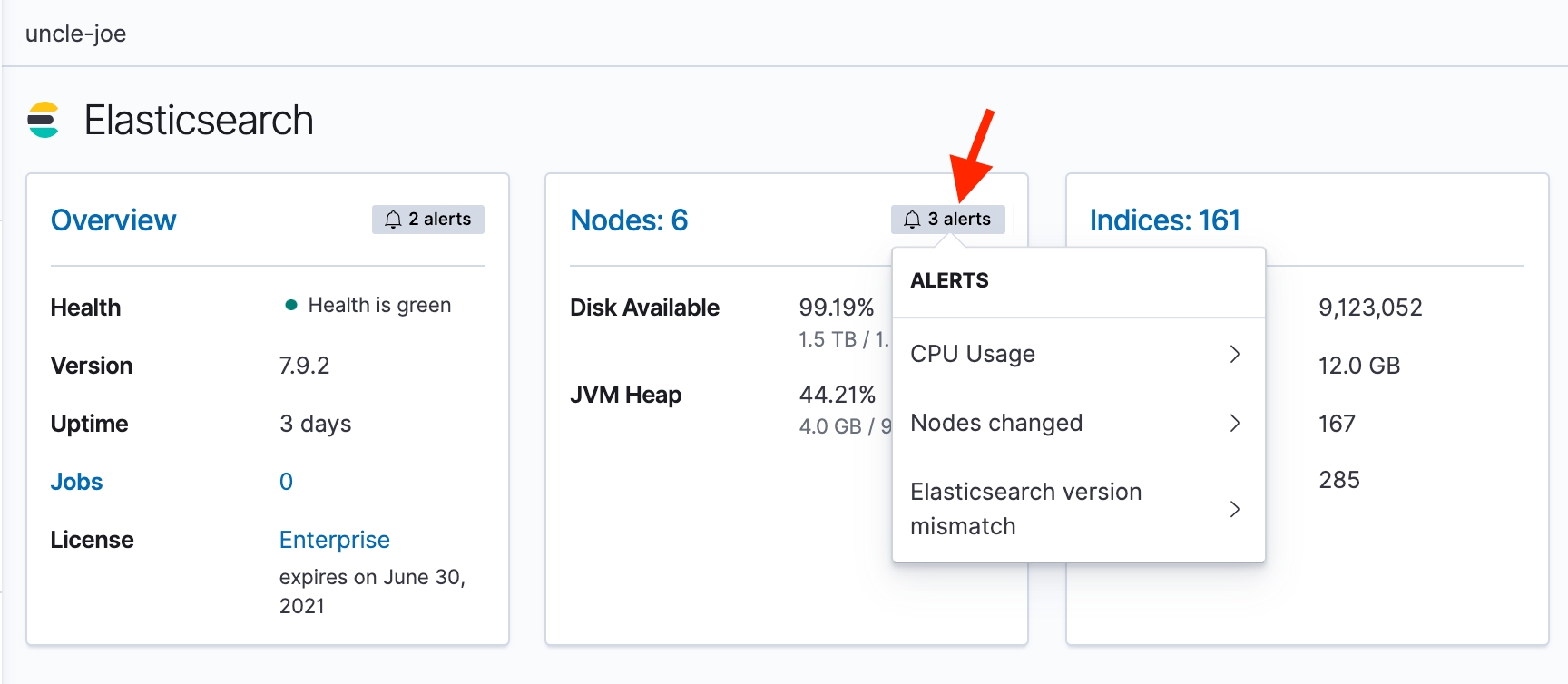
每個 Alerts 都可以進入編輯,並修改一些觸發條件、或是執行的動作。
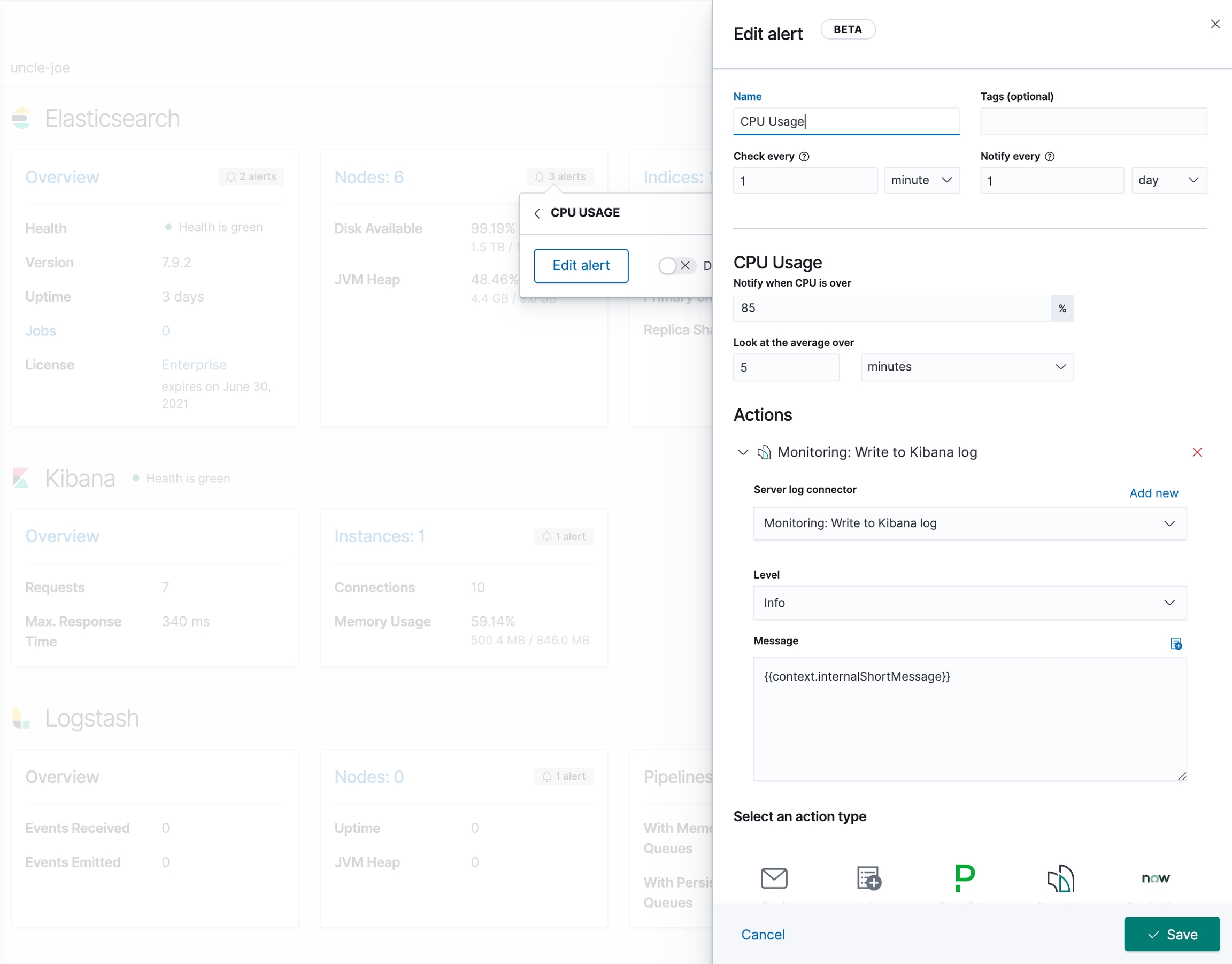
除此之外,Alerting Framework 目前強調的是可以在 Kibana 的任何地方都能輕鬆的建立合適的 Alert,也包含在 Machine Learning 時也能用同樣的機制來設定 alert 的 actions,這個 Alerting Framework 還在持續的發展中,期待接下來的版本有更多的功能推出,這次 Alerting Framework 不在此章節的介紹範圍內,有興趣的朋友可以參考下方的參考資料查閱更多的細節。
參考資料
Last updated